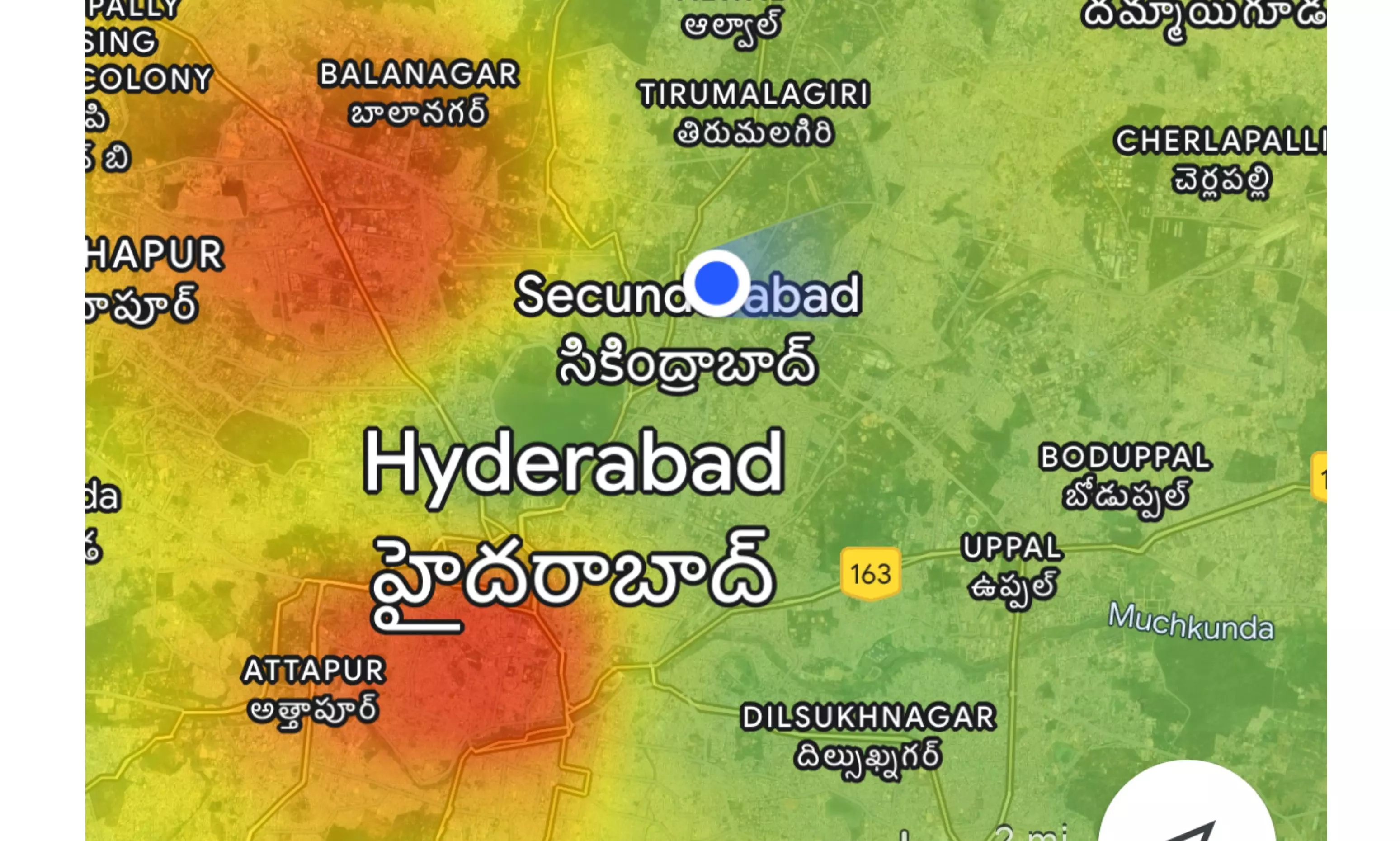
: Live air quality index (AQI) data from Google’s new feature for the past week has revealed a troubling spike to 171 ("very unhealthy") on November 20 — the highest the city has recorded this year. In widely shared images, large swathes of the city were marked red. On November 24, Banjara Hills reported ‘poor’ AQI of 133, tech hub Madhapur 128, Vittal Raonagar and Zoo Park 157 and 129, respectively, according to Google AQI data.
However, according to the Central Pollution Control Board (CPCB) bulletin for November 24, Hyderabad recorded a ‘moderate’ AQI of 123 with PM (particulate matter) 2.5 pollutants. According to Google, Hyderabad’s air quality ranged from AQI of 84 on November 19 to 171 at 8 am on November 20.

According to AQI India, this is the highest recorded this year. Google says its AQI figures are derived from a multi-layered AI fusion approach, combining data from sources like government monitoring stations, commercial sensor networks, satellite imagery, weather patterns, traffic conditions and land cover, among others. Incidentally, the website of the Telangana State Pollution Control Board (TGPCB) was down till 10.
10 pm on Sunday. For the week, average pollutant levels were PM2.5 at 59 μg/m3 and PM10 at 110 μg/m3.
carbon monoxide (CO) averaged 736 ppb (parts per billion), sulphur dioxide (SO2) at 6 ppb, nitrogen dioxide (NO2) at 13 ppb, and ozone (O3) at 11 ppb, AQI India data suggested. Pulmonologist Dr Kishan Srikanth Juvva, after learning about the air pollution concentrations in the city on Sunday, said, “Air pollution with such concentrations of PM2.5 is linked to increased morbidity and mortality not just among adults but also in children.
Beyond pulmonary issues, prolonged exposure can cause cardiovascular, cerebrovascular, and psychological problems.” He warned that air pollution also adversely affects infant brain development, lung function (including asthma), and mortality rates in children. CPCB data showed Hyderabad’s air quality is worse than southern cities like Bengaluru and Chennai.
With an average AQI of 123, Hyderabad was classified as moderate, causing breathing discomfort for individuals with respiratory conditions. In comparison, Bengaluru recorded an AQI of 100, and Chennai 88. Bengaluru’s better air quality was attributed to its green cover, while Chennai benefited from coastal winds.
Hyderabad, despite green cover, struggles with higher dust concentrations due to its landlocked geography. “In Indian landlocked cities like Hyderabad, Delhi are influenced by tropical climate which leads to higher dust concentrations compared to cold yet landlocked cities in the US or Europe,” explained Prasad, senior environmental scientist at Telangana State Pollution Control Board (TGPCB). Prasad also clarified a recent misunderstanding about recent news reports on AQI figures, stating, “Reports of AQI 300 were from Parbhani, Maharashtra, not Hyderabad.
” According to CPCB data, Delhi recorded a very poor AQI of 318, filled with PM2.5 pollutants, exacerbated by stubble burning and stagnant weather. Mumbai, facing the sea, recorded an AQI of 204, categorised as poor, which poses discomfort during prolonged exposure, even for healthy individuals.
Kolkata followed with a similar AQI of 220. Poor AQI According to Google’s air quality index (AQI) feature, the city was recording ‘poor’ levels Banjara Hills: AQI 133 (PM2.5: 70; PM10: 126; SO2: 22; NO2: 54) UoH: AQI 128 (PM2.
5: 61; PM10: 142; SO2: 22; NO2: 57) US Consulate: AQI 125 (PM2.5: 66; PM10: 137; SO2: 22; NO2: 54) Madhapur: AQI 128 (PM2.5: 63; PM10: 142; SO2: 22; NO2: 54) Vittal Raonagar: AQI 157 (PM2.
5: 77; PM10: 129; SO2: 22; NO2: 56) Zoo Park: AQI 129 (PM2.5: 64; PM10; 143, SO2: 22; NO2: 55) PM relates to particulate matter; smaller the size, more the harm. SO2 refers to sulphur dioxide and NO2 nitrogen dioxide.














